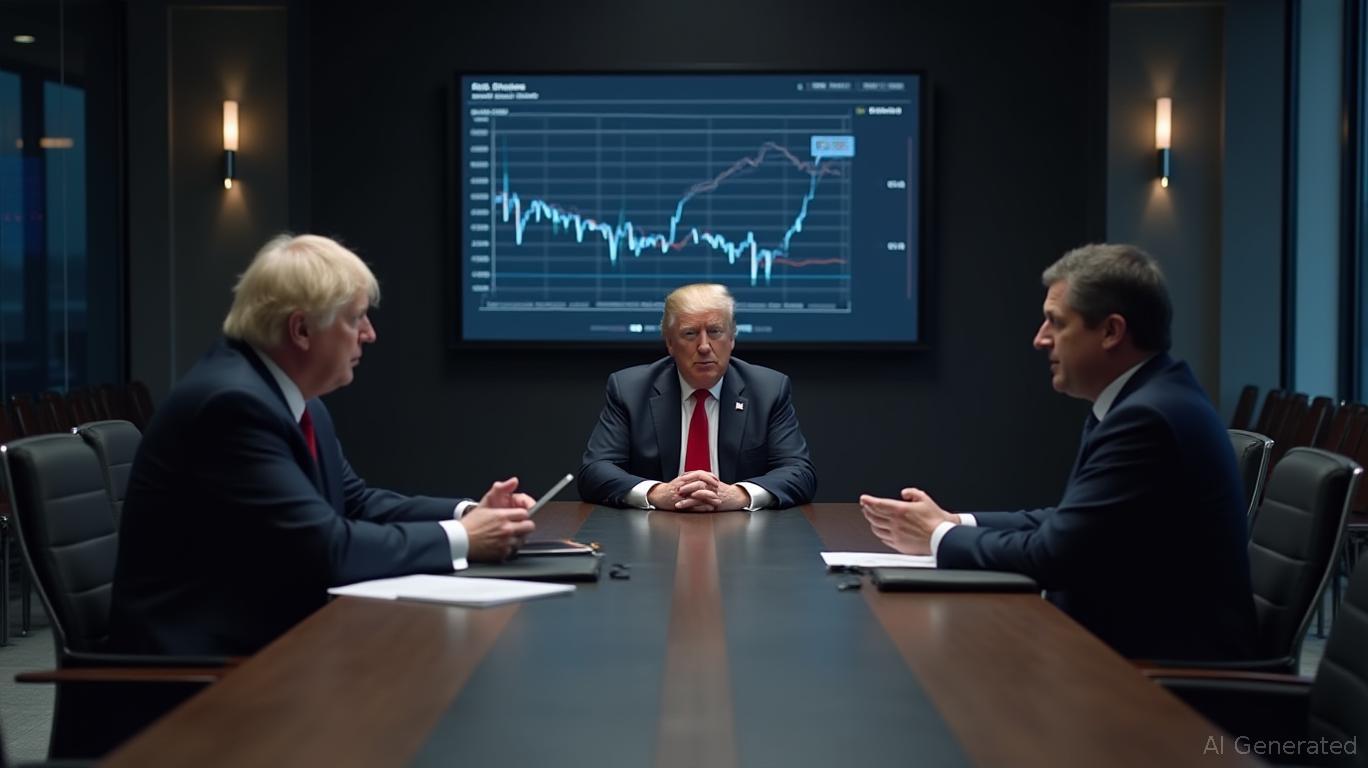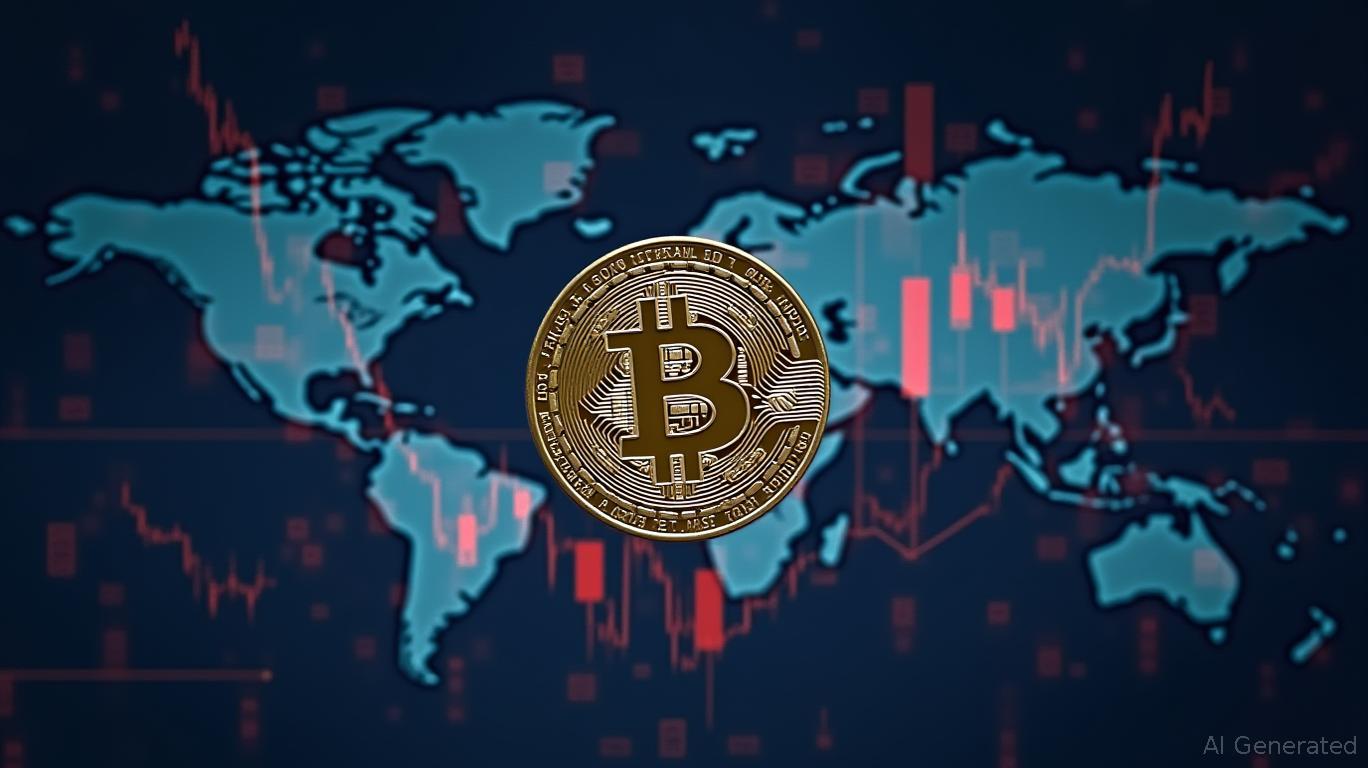U.S.-U.K. Trade Agreement Falters Amid Cultural Differences and Technical Conflicts, Disrupting Trump’s International Agenda
- U.S.-U.K. trade deal faces delays due to technical disputes and cultural clashes, risking Trump’s global strategy. - Initial terms aim to cut tariffs on cars, steel, and aluminum, but unresolved issues like supply chain rules and jet engine exemptions stall progress. - Parallel U.S. negotiations with China and ASEAN nations highlight a shift toward bilateralism, with mixed outcomes on tariffs and trade balances. - British officials resist U.S. demands for relaxed standards, emphasizing reciprocal benefit
The trade pact between the United States and United Kingdom, which President Donald Trump and Prime Minister Keir Starmer have praised as a significant achievement, is encountering increasing obstacles as negotiators grapple with complex final details. Announced in May 2025 after a congratulatory phone conversation between the two leaders, the agreement is intended to lower tariffs on automobiles, steel, and aluminum, and to ease non-tariff restrictions on American exports, according to
The initial provisions of the deal—such as reducing U.S. tariffs on British vehicles from 27.5% to 10% for up to 100,000 cars per year, and removing duties on steel and aluminum—were initially hailed as groundbreaking. However, unresolved matters like supply chain regulations and special allowances for jet engines produced in Britain have led to a stalemate, the Times noted. U.S. Trade Representative Jamieson Greer and Commerce Secretary Howard Lutnick have faced criticism for failing to coordinate their approaches, which has further complicated the talks, according to the Times. On the British side, officials have resisted U.S. requests to loosen product regulations, arguing that such changes could harm their own industries.

Meanwhile, the U.S. trade agenda extends beyond the U.K. At the same time, Trump and Chinese President Xi Jinping are preparing to conclude a trade framework agreement ahead of their summit in South Korea, with the U.S. Treasury expecting both an extension of the tariff ceasefire and renewed Chinese purchases of American soybeans, as reported by
At the same time, Trump’s visit to Asia, including his attendance at the ASEAN summit in Malaysia, highlights the administration’s intent to reshape international trade relations. The U.S. has imposed tariffs ranging from 10% to 40% on goods from Southeast Asia, prompting ASEAN countries to seek formal agreements to cushion the blow, as reported by Rappler. For example, Thailand’s trade surplus grew to $1.28 billion in September 2025, fueled by a 19% annual increase in exports. Nevertheless, the region remains cautious about U.S. protectionist policies, a sentiment reinforced by Trump’s sudden withdrawal from trade discussions with Canada following a controversial advertisement quoting Ronald Reagan’s anti-tariff remarks, as shown in
If completed, the U.K.-U.S. agreement could become a template for Trump’s broader trade approach, combining targeted tariff retaliation with selective compromises. British authorities have pointed out that the deal would provide mutual advantages, such as greater U.S. ethanol exports and wider access for American pharmaceuticals within the NHS, according to the Times. Still, with American negotiators waiting for final documents from London and ongoing disputes over issues like whisky tariffs, the timeline for reaching a signed deal remains unclear, the Times reported.
As Trump steers these negotiations, his administration’s strategy signals a wider move toward bilateral agreements, focusing on advancing U.S. economic priorities while navigating global political tensions. The next several months will reveal whether these efforts can yield lasting trade deals or further unsettle the international trading system.
Disclaimer: The content of this article solely reflects the author's opinion and does not represent the platform in any capacity. This article is not intended to serve as a reference for making investment decisions.
You may also like
U.S. and Vietnam Sign Trade Agreement to Offset China and Adjust Trade Relations
- U.S. and Vietnam finalize trade framework to boost commerce, reduce $123.5B deficit, and address market access barriers under Trump's Southeast Asia strategy. - Agreement includes Vietnam lowering tariffs on U.S. industrial/agricultural goods, U.S. granting duty-free access to select products, and resolving non-tariff barriers like vehicle standards. - Mixed market reactions emerge as U.S. agribusiness benefits but Vietnamese-sourced companies face Trump's 20-40% tariffs, complicating supply chains and c

Bitcoin Market Update: Institutional Investments and Easing Inflation Help Steady Crypto Investor Confidence
- Crypto Fear & Greed Index rose to 50 (neutral) on Oct 28, 2025, reversing from "extreme fear" due to institutional inflows and softer inflation data. - Fed policy shifts and Trump's pardon of Binance's Zhao drove Bitcoin's 3.5% weekly gain, while Ethereum faced $169M outflows. - U.S. led $843M crypto inflows, Germany recorded record $502M inflows, and Switzerland saw $359M outflows from provider transfers. - Bitcoin's $931M inflow boosted YTD totals to $30.2B, contrasting with altcoins like Solana ($29.4

Bitcoin Updates: October Sees Bitcoin ETF Investments Face Off Against Global and Economic Challenges
- Bitcoin's October underperformance, far below historical averages, raises concerns over geopolitical tensions and macroeconomic uncertainty. - U.S. spot Bitcoin ETF inflows, led by BlackRock, boosted prices above $126,000 despite volatile swings between $103,500 and $115,000. - U.S.-China trade developments and Fed policy shifts, including potential rate cuts, drive market sentiment and capital flows. - Ethereum faces outflows amid uncertainty over its post-merge roadmap, while altcoins see modest inflow

Bitcoin Updates: Investors Seize Strategic Opportunity as Market Sentiment Levels Off at Neutral
- Crypto Fear & Greed Index stabilizes at 50, marking a neutral stance after months of fear-driven volatility. - The shift reflects balanced investor sentiment, reducing panic selling and enabling strategic market analysis. - Calculated via metrics like volatility (25%), social media (15%), and Bitcoin dominance, the index signals reduced emotional trading. - Analysts highlight neutrality as a window for long-term accumulation but caution against complacency amid regulatory and macroeconomic risks.
